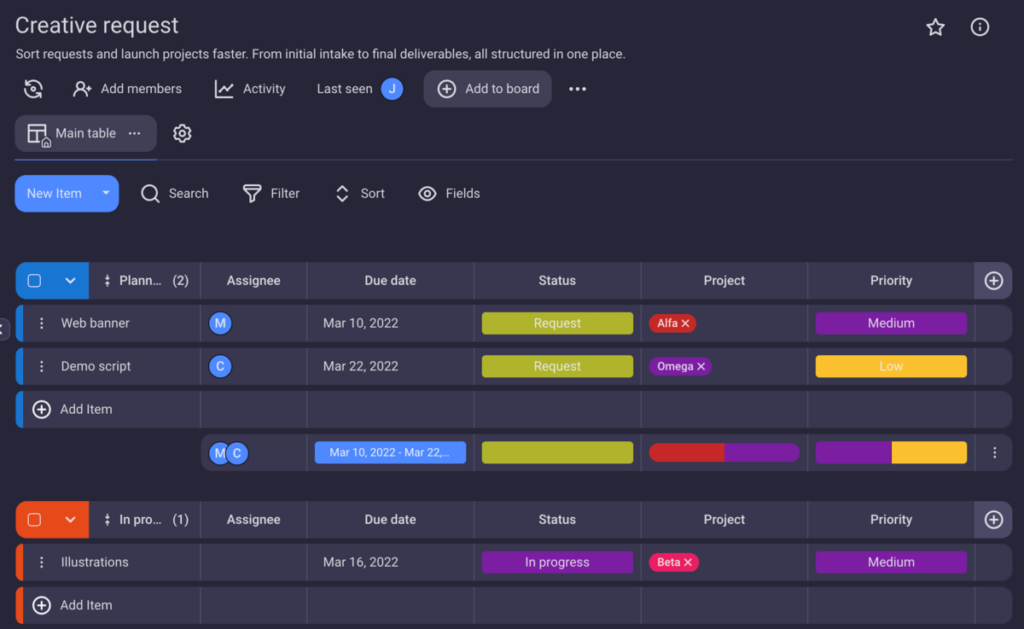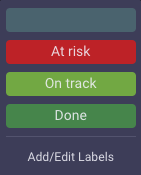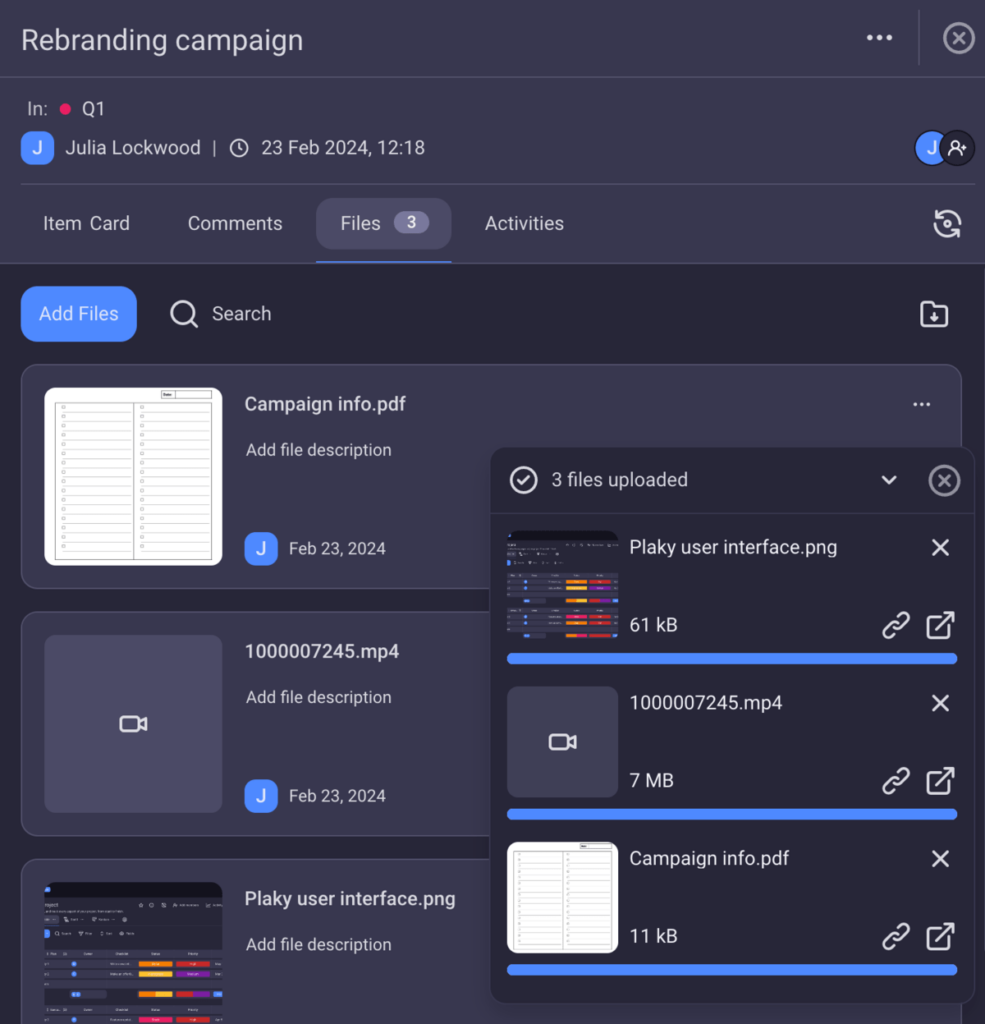Creativity is one of the most powerful human traits. It boosts progress and forces the tide of change.
How creatives come up with fresh ideas is still a mystery, but thanks to them, we can read great books, watch fantastic movies, and marvel at the architectural wonders of the world.
Creativity has no boundaries — it floats like a feather in the breeze, and it needs time to come to the surface.
On the other hand, project management is quite the opposite. It involves serious planning, setting deadlines, and managing teams of professionals.
One would say these 2 have nothing in common. Still, they can join forces and yield great results.
If you wonder how they interact, we invite you to keep on reading because this article is going to elaborate on the following:
- What creative project management is,
- Creative project management process,
- The difference between creative and traditional project management,
- What a creative project manager does,
- Importance of creative project management,
- What makes a great creative project manager, and
- Tips for great creative project managers.
Let’s start.

In this article:
What is creative project management? + key terms
Project management encompasses various skills and techniques used to manage both a team and a project.
Creative project management refers to the process of applying project management practices to creative teams and creative projects, such as producing a newsletter, brand awareness campaign, or 3D print.
The creative industry recognizes the value of project management methods and uses them to streamline projects and bring ideas to fruition.
There are 3 key terms you may come across in creative project management that we need to clarify:
- Creative assets,
- Creative workflow, and
- Creative resource management.
Let’s delve into these in more detail.
Term #1: Creative assets
Creative assets are one the most common creative project deliverables made by creatives who work in marketing, media, and advertising.
They refer to all those media files that define a brand and make it recognizable. Examples of these assets are:
- Photographs,
- Unique brand jingles, and
- Digital catalogs.
Term #2: Creative workflow
In short, a creative workflow is an established set of tasks and activities within a creative project.
A workflow provides a sort of framework for similar projects so that you don’t have to start every project from scratch. It enables smooth management of the project and leads your team toward project completion.
💡 Plaky Pro Tip
You can find more information on project management workflow in the following blog post:
Term #3: Creative resource management
The main resources a creative project manager takes care of are:
- Team members, and
- Their time at work.
Skilled managers know how to navigate the expertise of their team members and assign tasks appropriately. Also, by providing realistic deadlines, as well as some buffer time for each task, they allow creativity to manifest in its best version.
Despite the elusive nature of creativity, leading creative teams can be a smooth and well-organized process, and the following lines will present what this process looks like in practice.

Creative project management process in practice
Managing creative projects can be quite challenging because creative ideas can be quite subjective, and it is often difficult to translate them into actual deliverables.
On top of all, it might be difficult to reconcile the creative’s style with the client’s expectations. However, it’s not an impossible mission.
Creative projects follow the same pattern as other projects and essentially go through 5 project management phases:
- Initiation,
- Planning,
- Execution,
- Monitoring and control, and
- Closure.
We’ll lead you through each stage by using the following example:
You work in an advertising agency, and you are assigned to gather and manage a creative team to produce a TV commercial for new healthy juices that are about to be launched.
Phase #1: Initiation
The initiation phase lays the foundation for the project.
The creative project manager in charge of the TV commercial project has to meet with the juice company representatives and talk about their ideas and vision of what they want to accomplish.
The usual path is to create a business case that should be approved and if you get the approval, you should conduct a feasibility study and assess the project’s potential in this way.
The next step is to create a project charter and determine the project stakeholders.
There is one more essential detail in this phase — you need to select the right creative project management software that will be your main ally and help you:
- Launch your project,
- Manage the team’s workload,
- Store files and other relevant content,
- Gather team members in one centralized space, and
- Ensure cross-department cooperation.
Phase #2: Planning
This is the phase where major decisions should be made. You determine the project goals and define the project scope.
You should also plan the budget and resources and develop a project schedule.
Creative agencies usually use creative briefs to establish their agreement with clients. The client provides a clear creative brief, which is then upgraded with more details by the creative manager or director.
Briefs are major guides for the creative team’s work. In our example of the TV commercial, the creative brief would outline:
- Target audience,
- Key messages,
- Deliverables,
- Timeline,
- Budget, and
- Promotional methods.
The target audience is wide and includes all those who prefer a healthy lifestyle.
Key messages communicate how different generations can benefit from this product.
The deliverable your client wants is a TV commercial.
Promotional methods in this case are television and social media such as Facebook and Instagram.
The timeline and budget are set up in agreement with the client.
Creative project managers can make great use of the project management tool Plaky — especially its free creative requests template.

With Plaky, you can execute your creative requests in 3 steps:
- Assign work to the creative team and track their progress,
- Indicate the priority status of your tasks, and
- Mark tasks for review and approval.
When you have a clear plan, you can move on to the execution phase.
Phase #3: Execution
The execution phase is where your plan is put into action. Now, you assign tasks and make sure everyone knows their responsibilities.
You can easily do this through Plaky. What’s more, you can use it to communicate with your team, provide feedback, and give permission to stakeholders to check the progress whenever they want and provide real-time feedback.
In this phase, your team members are in charge of:
- Writing the script,
- Finding the right shooting location(s) and models,
- Creating music, and
- Checking technicalities such as broadcast laws.
Depending on the complexity of the project, you can divide your team members into groups such as:
- Content,
- Video production,
- Stylists, etc.
When everything is set up, the commercial is shot and goes to post-production where a team of experts edits, polishes, and adds finishing touches to make it ready for delivery.
Phase #4: Monitoring and control
This phase is closely connected to the previous one. The execution phase demands constant monitoring, or the project might go in the wrong direction.
But, if we regard this phase as a separate one, it is crucial to mention that a creative project manager has a lot of points to pay attention to. They need to:
- Establish KPIs,
- Review potential project risks, and
- Manage scope creep.
Plaky offers a great and transparent insight into your project progress. Creative managers can:
- Check the status of tasks and spot potential problems within the project,
- Give tasks a priority status,
- Reorganize people resources, and much more.

This phase also allows for stakeholder involvement as they might decide to modify certain features, which means you need to adapt the plan to meet their expectations.
Phase #5: Closure
When you successfully complete all the previous phases, you get to the closure phase or the so-called sign-off phase.
You show the commercial to the client, and you both raise your glasses to celebrate the end of the project.
What is left is to:
- Complete paperwork,
- Arrange a post-mortem meeting, and
- Store documentation.
It is highly recommended to prepare a lessons learned report and store it along with the project documentation.
Also, don’t forget to say thanks to your team and celebrate with them. Hopefully, your commercial will bring thousands of new healthy juice buyers, and you can celebrate by drinking the same juices in the project’s honor.
Now that we have presented what it takes to manage a creative project, we can move on and check if there are any differences between creative and traditional project management.

Creative project management vs. traditional project management
Traditionally, project management has been connected to software development, the manufacturing industry, and construction.
However, other fields such as sales, the creative industry, and HR, adopted its methodologies and principles.
Projects in any of these fields are carried out through roughly the same 5 phases, no matter if you run an IT project or work on a corporate rebranding.
In both cases, managers have the same goal — the success of the project. And, in order to get there, they use, more or less, the same tools and strategies.
But, differences are found in:
- The planning and execution phases,
- The perception of the project’s success, and
- The approach to team management.
Difference #1: Planning and execution
Traditional project management sets deadlines and has clear project milestones and guidelines, whereas creative project management prefers a more flexible approach.
Creatives do have deadlines, but since creativity takes time and cannot be rushed, they tend to have less tight deadlines to let the magic happen.
And, when it comes to the execution phase, the traditional approach follows a sequential timeline. On the other hand, the creative approach needs to have regular checks of the work in progress, which makes it a more agile approach in nature.
The creative work is subject to reviews and approvals and calls for periodic comments, edits, and potential content updates, which is not typical for the traditional approach.
Difference #2: The perception of the project’s success
Traditionals and creatives measure success differently. In traditional project management, reaching milestones and meeting deadlines is considered a success.
On the other hand, creativity is more subjective, it depends on ideas and inspiration, and success is often measured by your client’s satisfaction with the final product.
For instance, in a construction project, there is a strict plan for building a large-scale industrial facility for the storage of goods, and there’s not much room for meandering. On the other hand, in a creative project process, the team might come up with a better idea than the original one and the initial plan might change if the client agrees.
Difference #3: Approach to team management
When they need to meet a deadline, a traditional project manager can employ more workers to get the job done. They motivate their teams to perform faster and can invest more resources to reach the goal.
However, creative project managers are aware that putting pressure on the team will not wake up their creativity.
Creative people are harder to replace, especially in the middle of a project. Experienced managers in the creative industry know how to foster creativity, encourage innovation, and still achieve the project objectives.
Let’s now have a closer look at what creative project managers actually do.
What does a creative project manager do?
Creative project managers are in charge of creative projects, and they manage creative teams in areas such as:
- Design,
- Marketing,
- Web development,
- Video production, and more.
Creative project managers need to account for the fact that great creative ideas can’t be forced, and they should provide enough time for the creatives to find a creative solution.
Creative people are visual and intuitive types, able to think out of the box, and these are the reasons why people often find them nonchalant, disorganized, and hard to manage. Their reputation of being free-spirited people can sometimes be difficult to understand.
However, successful creative project managers will find a way to nurture the talent and ingenuity of their team members and, at the same time, guide them toward completing project objectives.
Apart from managing a team of creatives, creative project managers have a bunch of other responsibilities such as:
- Planning and organizing project scope, time, and budget,
- Communicating with team members and clients,
- Translating the client’s brief to team members and assigning the right tasks to the right people,
- Organizing and leading team meetings,
- Helping the team remove roadblocks,
- Monitoring project progress,
- Gathering client feedback,
- Creating reports for stakeholders,
- Doing reviews of the work in progress, and
- Approving the finished tasks.
How creative managers organize work and manage their team can depend on whether they work in-house or at a creative agency. Their key responsibilities are mostly the same, but let’s check some differences.
Creative project managers working in-house
If you work in-house within a company, it means that your focus is on that single company and its goals.
You have a great opportunity to gain profound knowledge of what your company needs in terms of promoting its products. A deep understanding of your company’s long-term goals helps you create a brand identity and attract loyal customers or audience.
Creative project managers working at a creative agency
This type of work offers more opportunities to use your team’s creativity because your projects might range from working on a logo of a new company to organizing a large-scale advertising campaign.
Having many clients can be a great way to improve your managing skills, meet different people, and broaden your experience. However, working on various projects means you’ll have to get familiar with every new client’s brand image and goals.
Having so much to cover and think about, creative project managers have to be true virtuosos at what they do.
They are necessary for many companies, and in the following lines, we are going to list some of the reasons why.
The importance of creative project management
So far, we have seen all the duties and responsibilities a creative project manager has, but we would like to point out some aspects of their management job that are important for creative industries and departments.
Firstly, creative teams need someone to spur them into action, guide them, and provide a framework for the creative process. Creative managers are there to bolster morale and support their team.
Secondly, creative management practices provide context and structure to teams including individuals who have different ideas, views, and imagination.
Last but not least, creative project management methods help boost productivity and facilitate project progress by supporting creatives in doing their best.
If you are interested in becoming a creative project manager, we’ll provide the answer on how to become one.

What makes a great creative project manager?
Creative project managers use their knowledge and experience to lead creative teams and regulate project administration.
Their duties vary depending on the size of their teams.
If they manage small teams, they still have time for their own creative contribution. In large teams, they mostly concentrate on the organization of work and time management.
They usually have bachelor’s degrees in:
- Communication,
- Marketing,
- Journalism, or
- Creative writing.
To develop their managerial skills, they can start as interns in creative and marketing departments or opt for additional certification programs for project managers.
Creative team leaders should also have some additional skills that are essential for this dynamic role. They should:
- Be people-oriented,
- Be detail-oriented,
- Be communicative,
- Be organized,
- Possess technical skills,
- Possess writing skills,
- Possess negotiating skills, and
- Possess Industry knowledge.
Let’s explain each skill in more detail.
Skill #1: Being people-oriented
Managing people necessitates that you are people-oriented.
This vital skill is necessary for leading creatives because you have to show an understanding of their quirks and allow time for their ideas to shine through. By showing that you are a team player, you can expect your team to work successfully.
Skill #2: Being detail-oriented
Having a keen eye for detail is a must in this job.
From the client’s brief to the project closure, you need to take care of every detail. When you approve an article, a design, or a video, you have to be sure that nothing is left out and that the result of your project meets the client’s expectations.
Skill #3: Being communicative
Even though communication is a key skill for many professions, it comes into full use within creative project management.
Not only is the creative manager a link between the project team and a client, but they often need to choose words — the right words — when they talk to their team members.
To help them overcome weaknesses and wake up their creative side, creative managers need to be very tactful.
💡 Plaky Pro Tip
Find out why communication is important in project management by reading the following blog post:
Skill #4: Being organized
Being organized is a prerequisite for creative project managers.
Task switching is inevitable, and this job usually requires juggling several tasks in one day. So, organization and careful planning are what builds your professional reputation.
Skill #5: Possessing technical skills
Technical skills belong to the group of project management hard skills, and they are acquired through education and training. In creative project management, they refer to having a working knowledge of software programs, visual art platforms or graphic design, etc.
Creative project managers know that using software for organizing and planning is a great advantage and it simplifies their overall work. Plaky is one of the tools that can help in coping with so many obligations.
Its intuitive interface helps creative project managers take full control of:
- The planning process,
- Staying up-to-date with the latest versions of designs, visuals, and assets, and
- Aligning their team(s) so that everyone is on the same page.
With so many different projects on their plates, creative and marketing agencies can make great use of agency management software such as Plaky because it allows them to share an unlimited number of files, documents, and links.

💡 Plaky Pro Tip
Learn how you can leverage Plaky to resolve various creative project management issues:
Skill #6: Possessing writing skills
Whenever there are some writing elements in the project, creative project managers often have to provide feedback on the written content. Their approval means that written pieces match the project’s desirable outcome.
Skill #7: Possessing negotiating skills
To keep your clients and teams happy, you need to be a clever negotiator.
It is essential to explain to your clients how the creative process works and prevent unrealistic expectations.
On the other hand, you have to make sure your team understands the client’s wishes and guide the team in making them come true.
Skill #8: Possessing industry knowledge
Industry knowledge implies having specialized knowledge of the client’s industry.
Creative managers in marketing teams need to know how to target the right audience, how to cater to the right demographic, what platforms to use, etc.
Thorough research should be an integral part of the creative project process, and it helps the creative team look more professional in the client’s eyes.
Let’s be honest — it takes great devotion to lead successful creative teams, but we can suggest some tips that can reduce the pressure and help you become great at your job.
5 Tips for great creative project managers
We have seen so far that managing creative people is quite challenging, but, with the right approach, it doesn’t have to be.
Your main duty as a creative project manager is to gather creative experts, recognize their strengths, and create an atmosphere that will stimulate creativity.
We have chosen 5 top tips that will help you polish your leadership style, and we’ll share these below.
Tip #1: Create a transparent process
If you want to build trust between the team you manage and the client, make sure you create a transparent process.
Your team needs to be familiar with the creative workflow and know what steps to take and why in order to reach project objectives.
Also, by providing stakeholders with clear insight into the project’s progress, you show them respect and readiness to cooperate.
An expert we reached out to, Codrin Cobzaru, Technical Project Manager at Lightyear Strategies, stresses the importance of clear expectations:

“The upfront due diligence to understand the requirements and to establish clear expectations with stakeholders will ensure buy-in from both the client and the team.”
Tip #2: Avoid micromanagement
Constant checking if your team members are on track can have negative effects on your team’s performance.
Creatives prefer a relaxed working environment, and if you tend to control all their activities, you won’t get far in bringing out the best they can give.
Try to adapt your attitude and loosen up the strings. Set clear goals and organize check-ins to monitor the progress, talk about potential bottlenecks, and encourage them to move on.
Tip #3: Be flexible to changes
Changes are never easy, and therefore the ability to quickly adapt your work and reallocate resources is highly important in creative project management.
Your client might ask for some additional features to be added, a crucial team member could go on sick leave, and the rain might keep pouring on the day when you are supposed to do a photoshoot on the beach.
All these might happen, and you need to learn to be flexible and avoid panicking.
Another expert we reached out to, Dennis Shirshikov, Strategist at Awning.com, recognizes flexibility as one of the best tips and states:

“In terms of best tips for running a creative project, I would suggest […] being flexible and willing to adapt to changes, as creative projects often require adjustments and pivots in order to achieve success.”
Tip #4: Have empathy
A great creative project manager will never underestimate the personal needs of their team members.
The main source of their creativity is their inner peace, and if something prevents them from doing their best, you should offer help and understanding. After all, you manage real people, not machines.
Also, your understanding should be applied to clients as well. Explain whatever they want to know, be patient when answering their questions, and show you are trustworthy.
Tip #5: Give recognition
Throughout the project lifecycle, you and your creative team will probably have both ups and downs, and as long as your team members keep up with the plan and do a good job, make sure you give them a pat on the back.
Your team members will appreciate the fact that you recognize their effort and celebrate their success.

Conclusion: When done properly, managing creatives can be a rewarding experience
We are aware that managing creative teams can often be frustrating. You can’t always expect them to work to the fullest. They need time to think and there is no button you can push to set their creativity in motion.
On the other hand, providing support to your team members on their creative journey during the project process is nothing but a rewarding experience.
One of the ways to secure this journey is to use the right software and gather your team, tasks, and documentation in one centralized place.
In his book Lateral Thinking for Management, Edward de Bono said: “Creativity involves breaking out of established patterns in order to look at things in a different way.”
Many innovative projects and products have seen the light of day thanks to creative people and creative teams. These people use their natural gifts to bring ideas to reality and are brave enough to think outside the box.
Creative project management should be dedicated to establishing a stimulating environment for guiding creatives and allow them to march to a different beat with the aim of making progress and changing traditional patterns.
✉️ Have you ever managed a creative team or had the opportunity to see how it works? What are your tips for being a great creative project manager? Or maybe you work in a creative team and have an insider’s view of the creative industry? We would be more than happy to hear from you. You can always email us at blogfeedback@plaky.com and share your experience and advice, which we may include in some of our future posts. If you know anyone who would find this text interesting, please share it with them.
